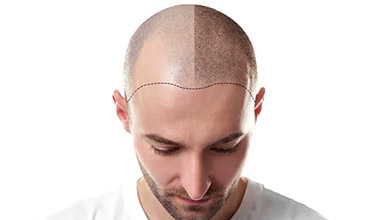Why DIY Asbestos and Lead Removal Can Be Dangerous
In the era of do-it-yourself (DIY) home improvement projects, many homeowners are tempted to tackle even the most challenging tasks themselves. While this approach can be rewarding for many types of renovations, when it comes to the removal of hazardous materials like asbestos and lead, DIY efforts can be extremely dangerous. Understanding the risks involved in handling these toxic substances is crucial for safeguarding your health and ensuring the safety of your home.

The Dangers of Asbestos
Asbestos, a group of naturally occurring fibrous minerals, was widely used in construction materials for its durability and resistance to heat and fire. However, asbestos fibers are extremely hazardous when inhaled, leading to severe respiratory diseases, including lung cancer, mesothelioma, and asbestosis.
1. Health Risks
Asbestos fibers can become airborne during removal or disturbance of asbestos-containing materials (ACMs). Inhaling these fibers can cause serious health issues. Mesothelioma, a rare and aggressive cancer, is almost exclusively caused by asbestos exposure. Asbestosis, a chronic lung disease, results from long-term exposure to asbestos, leading to lung tissue scarring and respiratory problems. The latency period for these diseases can span decades, making it difficult to link symptoms directly to asbestos exposure.
2. Improper Handling
DIY removal often involves improper techniques that can release asbestos fibers into the air. Simple actions like cutting, sanding, or scraping ACMs without proper precautions can result in widespread contamination. Asbestos fibers are microscopic and can linger in the air for long periods, increasing the risk of inhalation.
3. Lack of Protective Equipment
Professional asbestos abatement teams use specialized equipment, including HEPA-filtered vacuums, negative air pressure machines, and personal protective gear such as respirators and disposable coveralls. Most homeowners lack access to this equipment, putting themselves at greater risk of exposure during DIY removal.
The Dangers of Lead
Lead, a toxic heavy metal, was commonly used in paints, plumbing, and various household products until its health risks became widely recognized. Lead exposure is particularly harmful to children, causing developmental and neurological damage, but it also poses significant risks to adults.
1. Health Risks
Lead poisoning can affect nearly every organ system in the body. In children, it can lead to cognitive impairments, learning disabilities, and behavioral problems. In severe cases, high levels of lead exposure can cause seizures, coma, and even death. Adults exposed to lead may experience hypertension, kidney damage, and reproductive issues.
2. Inadequate Safety Measures
DIY lead removal often involves inadequate safety measures. Disturbing lead-based paint, for instance, can generate lead dust, which is easily inhaled or ingested. Without proper containment and cleaning procedures, lead dust can spread throughout the home, posing a risk to all occupants.
3. Lack of Specialized Tools
Professionals use specialized tools and techniques to safely remove lead-based materials. HEPA vacuums, wet sanding methods, and chemical strippers are essential for minimizing dust and preventing contamination. DIY efforts without these tools are likely to result in hazardous exposure.
The Importance of Professional Removal
Given the significant health risks and complexities involved, professional removal of asbestos and lead is essential with asbestos removal firms. Certified professionals have the training, experience, and equipment necessary to handle these materials safely and comply with all relevant regulations.
1. Expertise and Training
Professional asbestos and lead abatement teams undergo rigorous training and certification processes. They are knowledgeable about the latest safety protocols and regulatory requirements, ensuring that removal is conducted safely and effectively.
2. Proper Containment
Professionals establish proper containment areas to prevent the spread of asbestos fibers and lead dust. Negative air pressure systems and sealed work areas help to isolate the hazardous materials and protect the rest of the home.
3. Safe Disposal
The disposal of asbestos and lead is regulated by strict guidelines to prevent environmental contamination. Professionals ensure that hazardous materials are transported and disposed of at designated facilities in compliance with these regulations.
Legal and Regulatory Considerations
DIY removal of asbestos and lead can also result in legal and financial consequences. Improper handling and disposal can lead to hefty fines and legal action. Additionally, if you plan to sell your home in the future, undisclosed asbestos or lead hazards can complicate the sale and reduce property value.
While the allure of DIY projects is strong, the risks associated with asbestos and lead removal far outweigh any potential savings. These hazardous materials require specialized handling, equipment, and expertise to ensure safe removal and disposal. By relying on certified professionals, you can protect your health, comply with regulations, and ensure the safety of your home and loved ones. Remember, when it comes to asbestos and lead, DIY is simply not worth the risk. Transform your living space with expert renovation services from NYCrestoration.com, where quality craftsmanship meets innovation in every project.
Hits: 7959 | Leave a comment
Tags:DIY

















